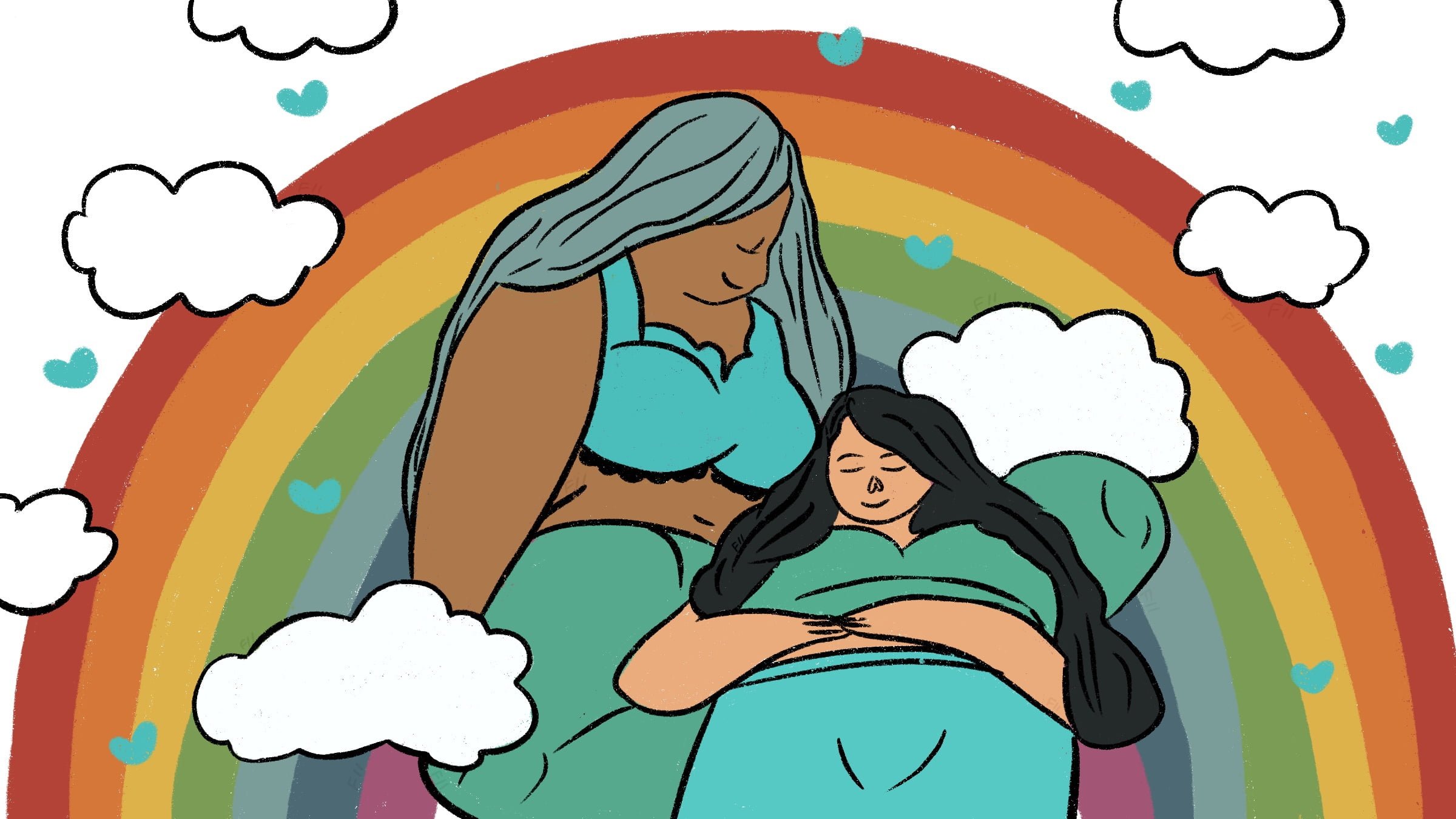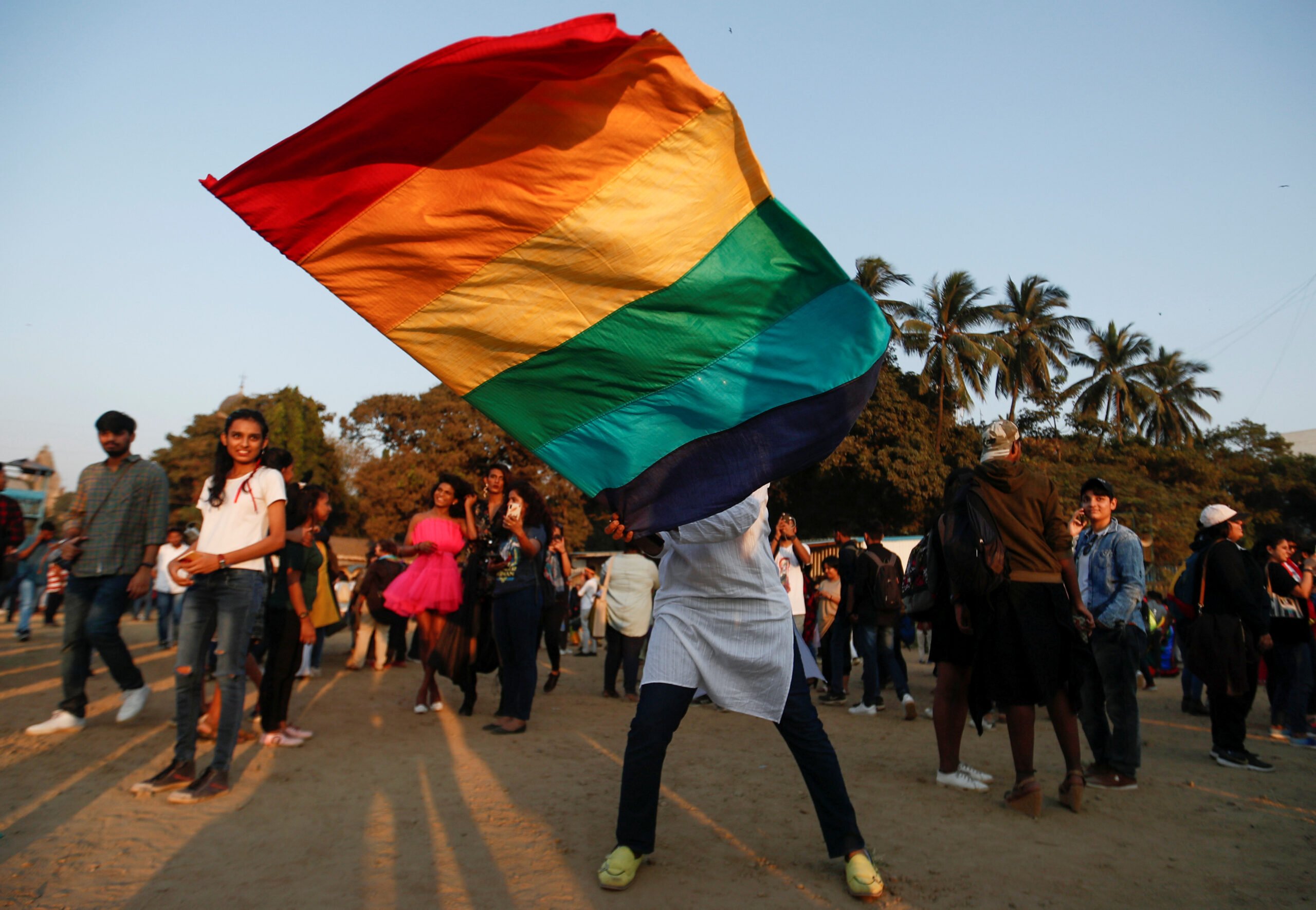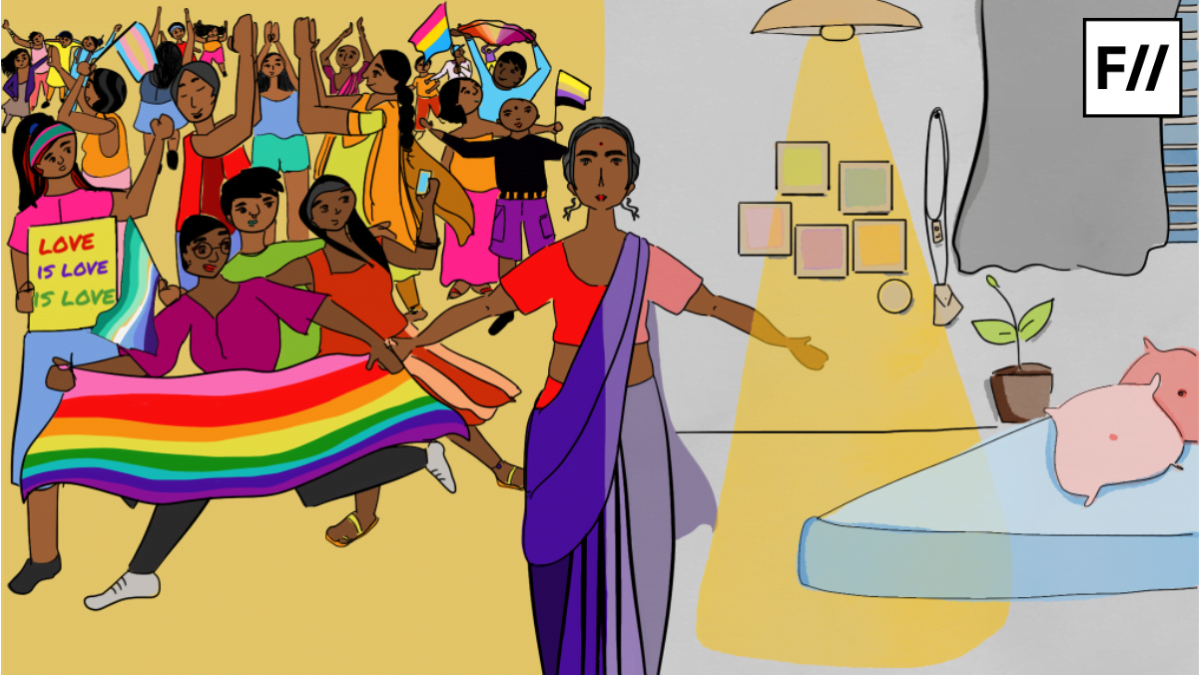Sara Ahmed presents an intersectional framework within feminist theory in her publication titled “Queer Phenomenology: Orientations, Objects, and Others.” The individual expresses an inquiry regarding their sexuality and orientation, while also contemplating the distinction between these two concepts. Orientation is derived not solely from the physical body, but also from other external factors such as objects, ideas, culture, and proximity. The term “queer,” traditionally associated with sexual orientation, has been employed as a broad categorisation including various sorts of non-normative identities and experiences that are subject to discrimination. The term ‘queer‘, which emerges as a result of deviations from conventional heterosexual orientations, plays a significant role in shaping both sexuality and racial categorisation. The formation of queer identity is influenced by the spatial and temporal orientation of bodies, which in turn has an impact on social space. The individual speaks to the intersection of race and “others” to elucidate the dual connotations of queerness, asserting that the process of racialisation renders certain bodies, particularly those of mixed racial heritage, somewhat queer.

The author specifically highlights the presence of white spaces and the concept of ‘colour‘ as prominent factors in the given context, emphasising that bodies become noticeable when they deviate from the established social space. Ahmed uses the theoretical framework developed by Frantz Fanon to analyze and interpret the intersection of queer phenomenology with inquiries about orientalism and racial dynamics. The author posits that the process of colonisation has resulted in a global paradigm that is predominantly white-centric, hence establishing a linear trajectory that normalises whiteness while marginalising other racial identities as deviant or queer. Due to the prevailing white-centric perspective, individuals of non-white backgrounds experience a sense of detachment from their path.
Racism perpetuates a dynamic where the black perspective is directed back towards the black individual, but this redirection is not one of affectionate recognition; rather, it aligns with the antagonistic gaze of the white observer. Racism has been observed to have a detrimental impact on individuals, leading to a state of bewilderment that ultimately hinders their ability to engage in effective activity. Consequently, the concept of whiteness functions as a mechanism that imposes conformity upon bodies that are categorized as “oriental” or racially distinct. The historical phenomenon of colonialism has resulted in certain objects being accessible to those who are of white racial background, while simultaneously excluding others from such opportunities. The privilege of whiteness is bestowed onto individuals with white bodies due to their proximity to objects and advantages associated with privilege. This is because the presence of certain things within reach shapes the structure of a society, resulting in a world that revolves around whiteness.
The mixed-race body, in this manner, alludes to a queer phenomenology. The body of mixed-race individuals diverges from the trajectory of whiteness while adhering to it.
The preservation of racial divisions is upheld by the resistance to interracial relationships. The act of reproduction within a specific racial group signifies the continuation of the genetic lineage associated with that particular race. The process of reproduction involving individuals from different racial backgrounds results in offspring that exhibit characteristics that are not exclusively attributed to either white or non-white racial groups. However, it is important to note that the mixed-race individual cannot be entirely disconnected from either the white or non-white ancestral backgrounds. The mixed-race body, in this manner, alludes to a queer phenomenology. The body of mixed-race individuals diverges from the trajectory of whiteness while adhering to it.

The encounter with a mixed body shares similarities with the experience of sexual queerness, since it challenges the fixed constructs of heterosexuality. Ahmed employs Adrienne Rich’s literary contributions and the concept of ‘compulsive heterosexuality‘ to assert that the familial framework imposes a predisposition towards perpetuating itself in offspring and their subsequent existence. Specifically, individuals are anticipated to follow similar trajectories and encounter comparable circumstances, namely, the cultivation of their heterosexuality and adherence to heteronormative familial structures. This phenomenon obstructs the foundational structure and reinforces the presupposition that certain perspectives are inherent or unavoidable due to their exclusive visibility within our constrained realm of sight. Our understanding of things is limited to the extent that we can perceive them within the constraints of our orientation.
Ahmed further expands upon this phenomenological perspective by highlighting the inhibitory effect of the designated line of direction, which restricts our ability to see alternative options—alternative lines of orientation that we could potentially pursue. The lines that facilitate navigation, commonly referred to as the lines ‘in front’ of us’, selectively provide access to specific things while barring others. By adhering to specified trajectories, certain objectives become attainable while others may remain or even become unattainable. Orientations are influenced by the proximity of objects to the body or their accessibility. This study of queer phenomenology elucidates the spatial configuration of social relations, the disruptive and altering effects of queerness on these ties by deviating from conventional norms, and the potential of a disorienting political approach to expand the realm of accessible objects, even those that may initially appear unusual. Ahmed posits the notion of queer phenomenology as a means to explore the influence of phenomenology on the concept of orientation, as well as the orientation inherent within phenomenology itself. Consequently, the individual engages in contemplation over the importance of the items that are present, as well as those that are absent, as indicators of orientation as suggested in renowned phenomenological works on Husserl’s Ideas.
Ahmed posits the notion of queer phenomenology as a means to explore the influence of phenomenology on the concept of orientation, as well as the orientation inherent within phenomenology itself
Our inclination is directed towards objects or entities that are within our visual range and perceptible to our senses. According to her argument, orientation is contingent upon the pre-existing models of orientation that are available to us. Individuals tend to align themselves with the perceived line, thereby orienting themselves accordingly. The line to which one orients oneself determines the items that can be perceived along that line, subsequently leading to a further alignment with the line from one’s perspective. The line itself is intangible to our visual perception, as we are only able to perceive the items that are positioned along the line. The line gradually diminishes in prominence, causing our attention to be directed towards the objects planted along the line. Consequently, individuals persist in adhering to their established course of steps often without recognising that their inclination is not entirely inherent.

Ahmed presents a thought-provoking argument that encourages readers to critically consider the significance of directionality and orientation about perception, experience, and the formation of social spaces. Individuals are commonly anticipated to navigate their life trajectories in specific orientations. Ahmed affirms that individuals acquire not only financial obligations and possessions from their parents, but also inherit a set of principles, convictions, and ambitions that shape their outlook on life. Individuals are commonly anticipated to follow specific trajectories in life, which are characterised as “straight” due to their alignment with conventional societal norms and expectations.
When individuals adopt alternative orientations, they have to abandon conventional linear orientations. Opting to adopt an alternative or non-conforming orientation, such as queerness, entails a departure from established societal standards and venturing into unfamiliar terrain, resulting in a state of ambiguity. The author utilises the concepts put out by Judith Butler, specifically the concept of performativity, to analyse the process through which gender and sexuality are not inherent attributes, but rather are formed and shaped via repetitive actions and performances.
The perpetuation of the line of heterosexuality relies on the participation of all individuals situated on this line, thereby giving rise to the compulsion innate to compulsory heterosexuality
The perpetuation of the line of heterosexuality relies on the participation of all individuals situated on this line, thereby giving rise to the compulsion innate to compulsory heterosexuality. As Ahmed aptly highlights, the presence of “evidence” indicating the lack of necessity or inevitability is a prerequisite for something to be deemed obligatory. The imperative of heterosexuality arises from its lack of natural prescription. However, this compulsion determines the selection of objects that can be made accessible based on their orientation. The concept of the family lineage presents an exclusive framework for understanding desire, serving as a separate guiding principle. It establishes a set of expectations whereby the child is expected to adhere to the parental lineage, so granting access to certain goods while excluding others. The youngster exhibits a preference for objects or individuals that are in close proximity, as proximity is associated with a sense of familiarity or comfort that has already been established within the child’s home environment.

According to the conceptual system of compulsory heterosexuality, the perpetuation of the family lineage is attributed to the presence of heterosexual desire and the act of reproduction. The phrase ‘synonymous with the line of the father‘ holds both literal and figurative connotations. In a society characterised by patriarchal norms, the act of procreation serves to perpetuate the paternal lineage and ensure its continuation. Same-sex desire can be understood as a divergence from the reproductive continuum. In the instance of the daughter, her selection of a male companion serves the dual purpose of ensuring the continuation of the paternal lineage and validating its legitimacy. The act of refusing the desired object by familial lineage raises doubts about the authenticity and validity of the lineage. The concept of compulsory heterosexuality is deemed ineffective.
Ahmed provides a rationale for this phenomenon by attributing it to the motivational force of desire. The lesbian individual is inclined towards novel objects because of an inherent desire for something that deviates from societal norms. The individual repositions herself in relation to her familial lineage and encounters various objects and orientations. Similar to how heterosexual individuals establish their desires by engaging with items aligned with their sexual orientation, lesbians can be understood as having developed their lesbian identity through interactions with both individuals and objects. The force inherent in Ahmed’s rejection of compulsory heterosexuality lies in its deliberate avoidance of responding to the summons of societal norms and obligations. When confronted with objects aligned with heterosexual orientation, lesbians do not change their course. Instead, she seeks alternative perspectives that unavoidably influence her actions.
The force inherent in Ahmed’s rejection of compulsory heterosexuality lies in its deliberate avoidance of responding to the summons of societal norms and obligations.
The inquiry of the presumed inevitability of heterosexuality is conducted by means of destabilising the conventional limits. The assertion emphasises the inability of certain objects to maintain their intended position and the resulting loss of their functionality. Deviations were suggested to be ignited by the failed orientation when bodies occupy spaces that do not extend their shape or employ things that do not extend their reach. During instances of failure, such objects serve to redirect attention elsewhere or to create an unfamiliar atmosphere within the immediate surroundings.

The examination of phenomenology should encompass not only the objects to which our orientation is directed, but also the manner in which phenomenology functions as an orienting device. In this work, Sara Ahmed uses the term ‘queer‘ in the manner described above, while also advocating for a reclamation of its initial connotation denoting strangeness. To identify as queer is to embody characteristics that deviate from societal norms, exhibiting a sense of nonconformity, divergence, or distortion. Put simply, the term ‘queer subject or object‘ refers to an individual or entity that deviates from the conventional and heterosexual norms. The author elucidates the notion of common homely objects such as tables which are commonly perceived as mere furnishings for our home, although the author claims that, in reality, our home furnishes us. The book asserts a consistent argument regarding our orientations in a broader sense. While our orientations may involve a specific focus on particular objects, it is important to recognise that orientation encompasses more than mere directionality. The objects towards which we are orientated have a significant role in shaping the places we inhabit. Queer phenomenology is a novel and perceptive contribution to feminist, queer, critical race theories, and the field of phenomenology. Ahmed prompts her audience to contemplate the manners in which queerness engenders a state of disorientation and advocates for a reconsideration of its negative connotations.






While perusing this book critically for my research on bisexuality, I find her analogy of seeing the world not on coordinates and quadrants but from the kaleidoscopic range of countries, ocean and geographical topography embodying the complexity of unexplored trajectory quite compelling.